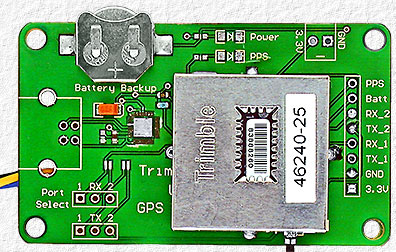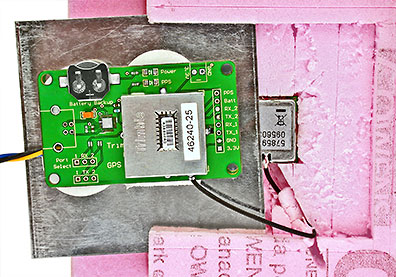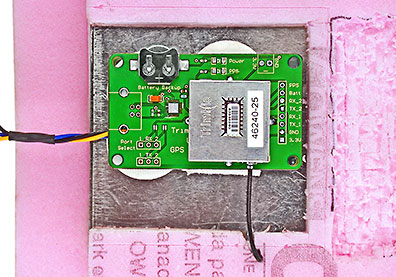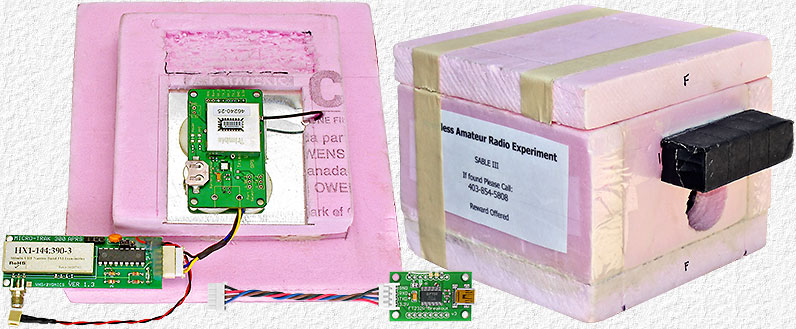SABLE-3 Micro-Trak Tracker with
|
|
|
 |
A defective Sparkfun USB iQ evaluation board, with the USB connector and defective USB circuitry removed, was used as it was the quickest way to provide connections and a backup battery for the receiver. | |
|
Ceramic antennas, like the one used, work better with a ground plain and the thin 3" square piece of metal used for one provided a convenient way to install the GPS receiver and antenna into the lid of the payload container.
An area 1/4" smaller then the metal on 3 sides and 1/4" deep was cut from the center piece of the lid foam and the metal was slid into a slot cut along the bottom of the 3 cut sides until it was flush with the 4th open side. Another area the same size as the antenna, in the center of the first area and under the metal sheet was cut out for the antenna with a slot for the antenna feed-line to lay in as it runs to the receiver mounted on the opposite side of the metal with double sided foam tape.
For details of the tracker, see the Micro-Trak 300 - V1.3 APRS Tracker page. For more about the iQ GPS receiver, see the Lassen iQ GPS Receiver Page |
||
|
See the SABLE Tracker Wiring & Modification Details PDF for wiring and further Micro-Trak, GPS & USB Board Details |
||
| Micro-Trak 300 | Lassen iQ GPS Receiver | ||||||
| Typical Supply Voltage = Minimum Supply Voltage = Minimum Supply Voltage = Idle Current (w/ No LEDs) = Transmit Current = |
9.0 VDC 6.6 VDC w/7805 reg. 5.1 VDC w/ KF50BDT-TR reg. 40 ma 134 ma |
Supply Voltage = Receiver + Antenna Current = |
3.3 VDC 32.4 ma |
||||
| ( Receiver = 24.6 ma, Active Antenna = 7.8 ma ) 3.3 VDC power is from a linear regulator on the Micro-Trak powered from it's 5V linear regulator. |
|||||||
|
Total Tracker Current w/ GPS = 72.4 ma idle & 166.4 ma transmit for an avg. current of 5 Energizer L91 Lithium AA cells were used for power. The open circuit and loaded voltages weren't able to be measured until after the flight when the O.C. voltage was 9V, or 1.8V/cell. After 6-1/2 hrs of operation the loaded voltage was 7.79V and after 16 hrs was 7.62V, or 1.52V/cell. 5 cells were used to ensure there wouldn't be a problem, but 4 cells would have obviously been enough, would have lasted about 75 hrs. and have weighed only 13g more then an alkaline 9V battery that would have only lasted about 8 hrs. or until it froze, unlike the L91 AA Lithium/Iron Disulfide (Li/FeS2) cells which are good to −40°C. |
|||||||
|
|||||||
| To BEAR Home Page |


